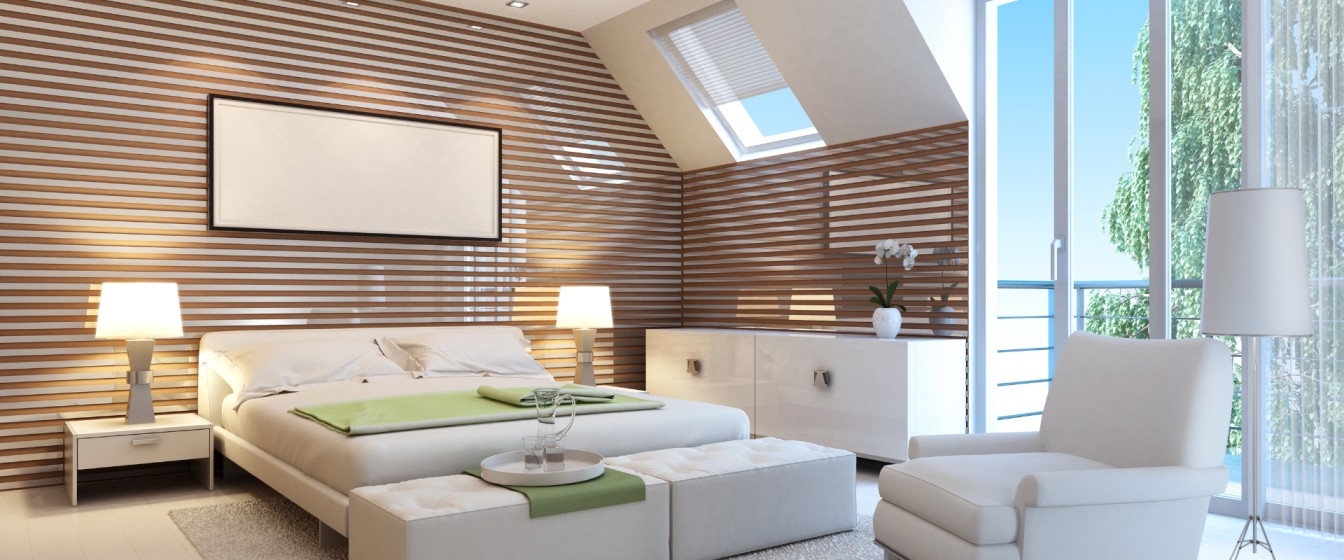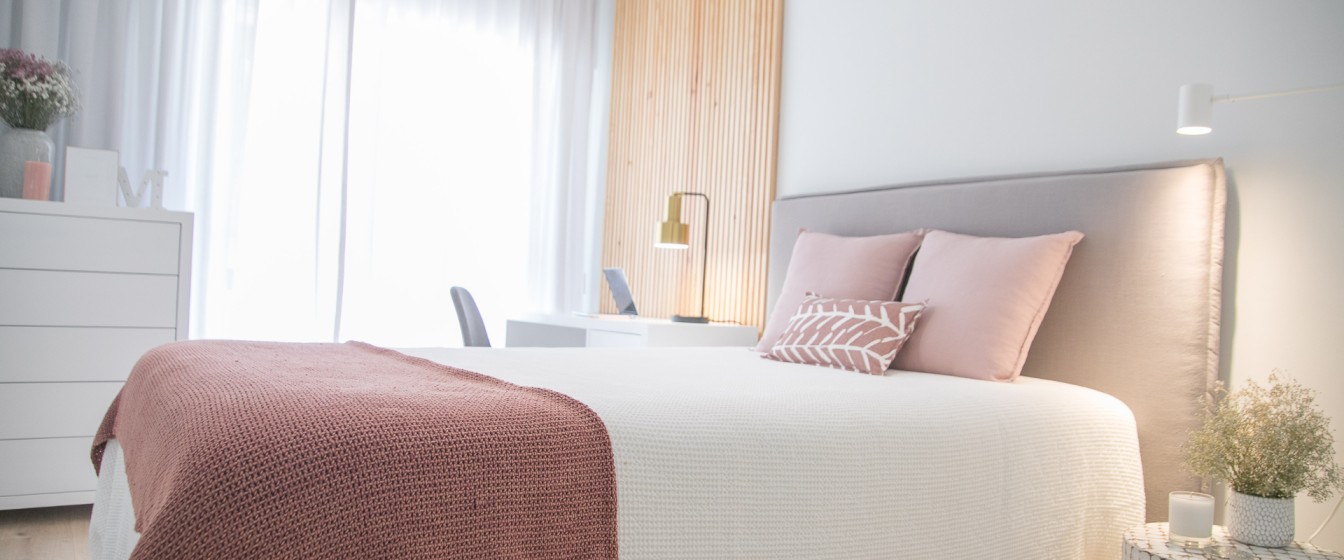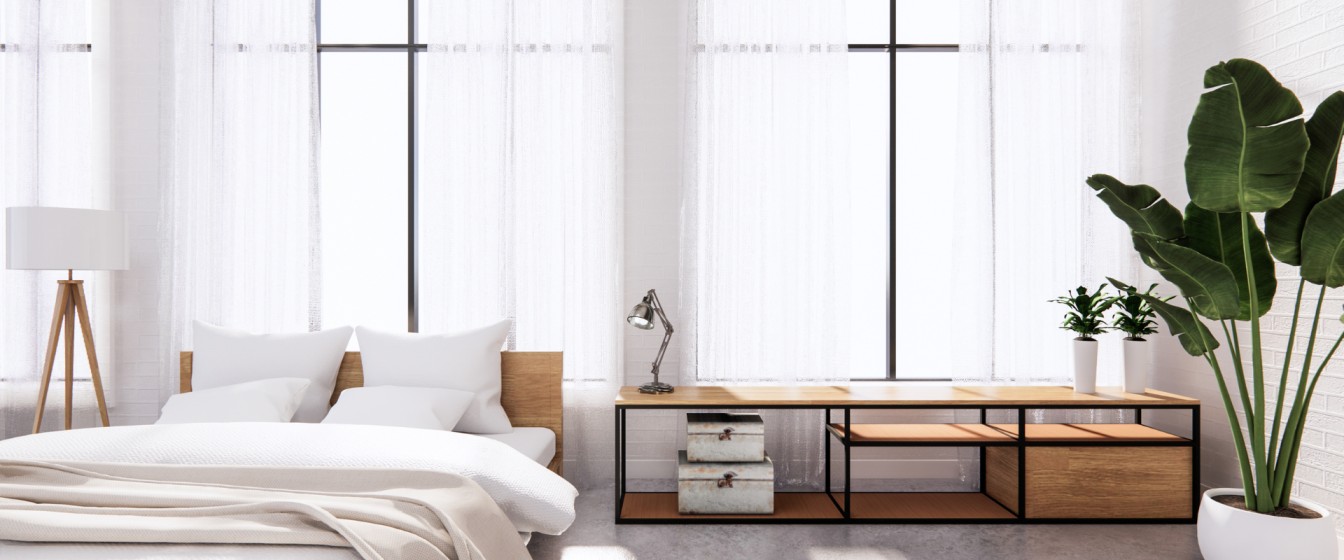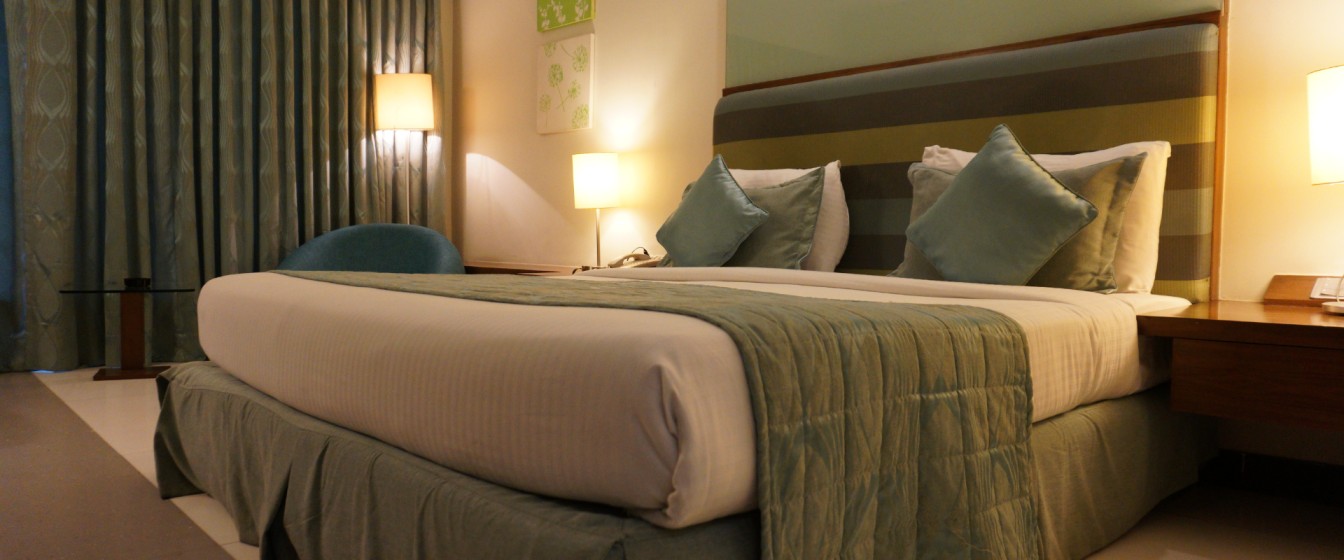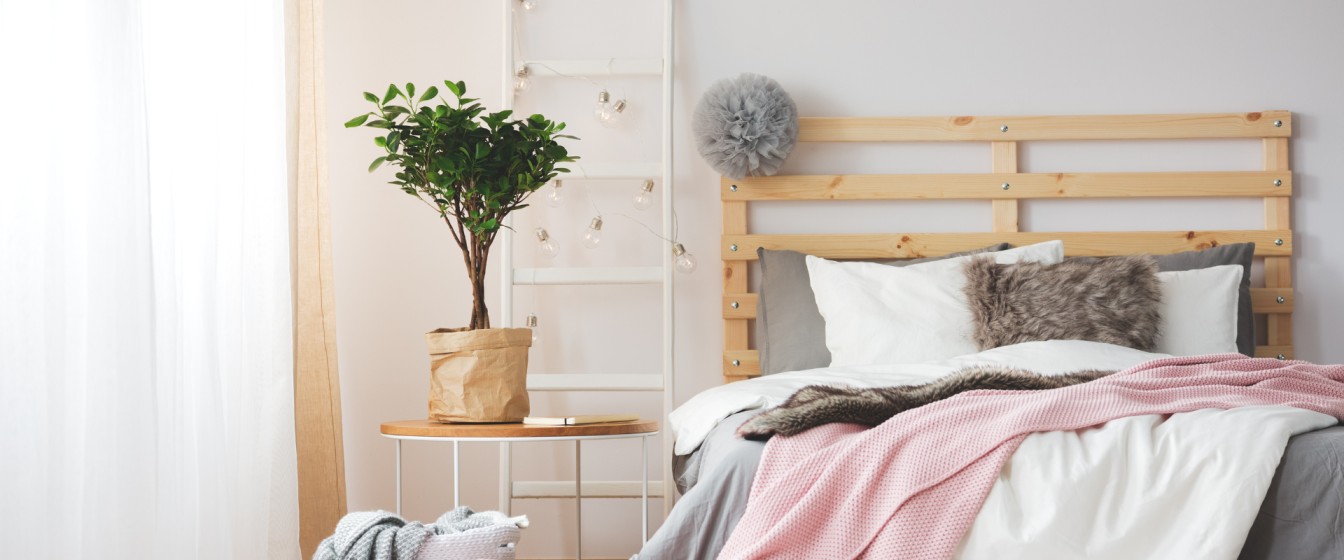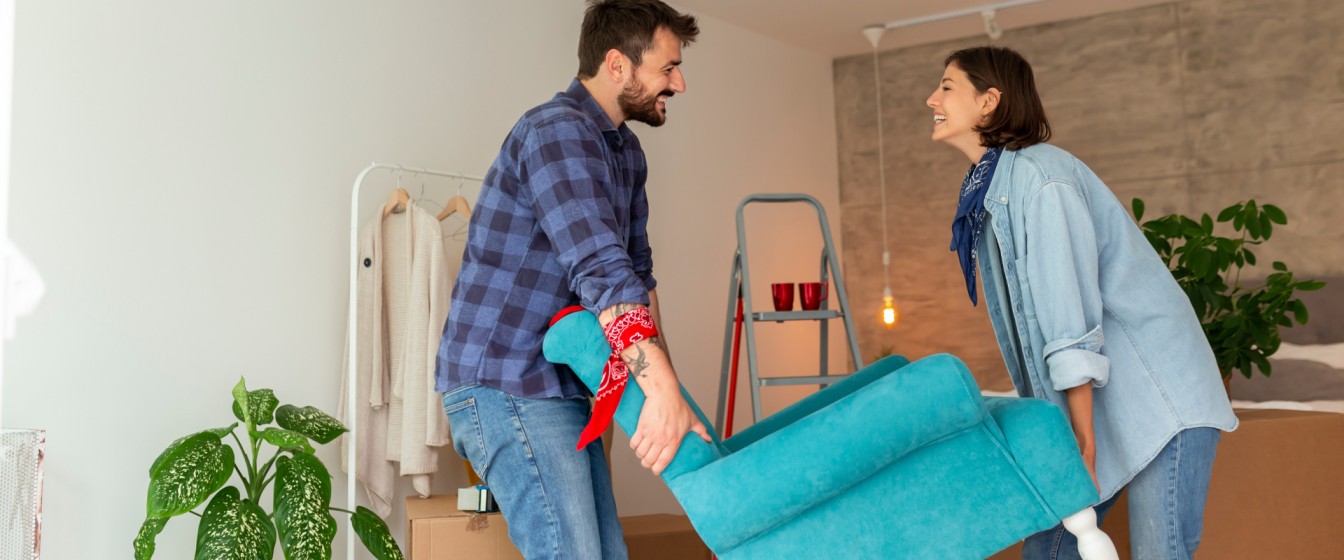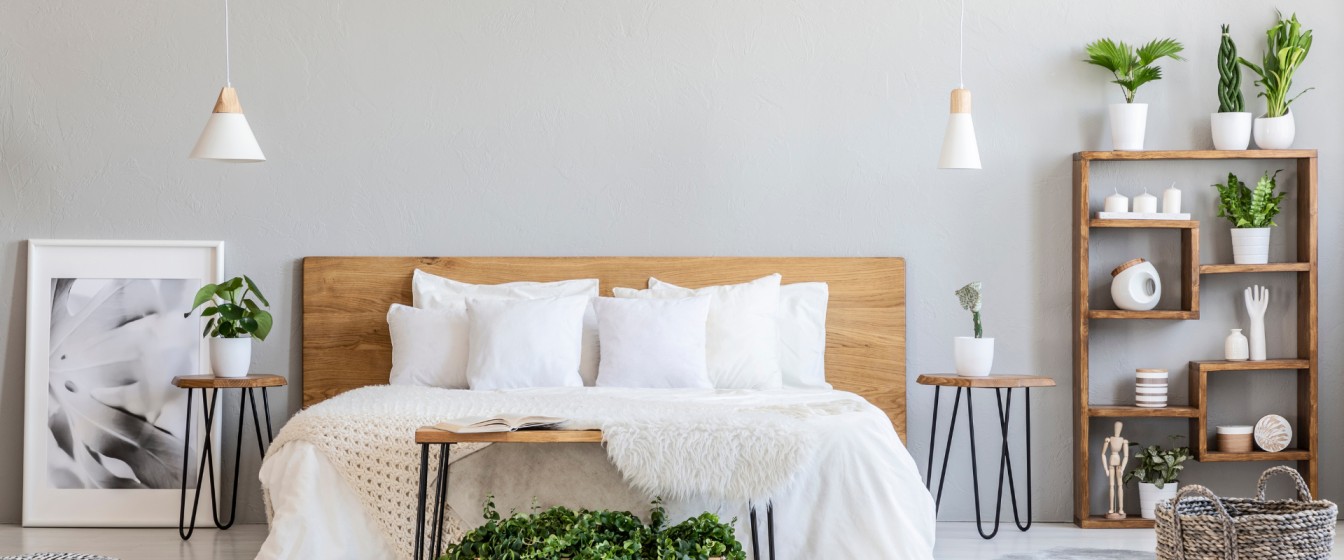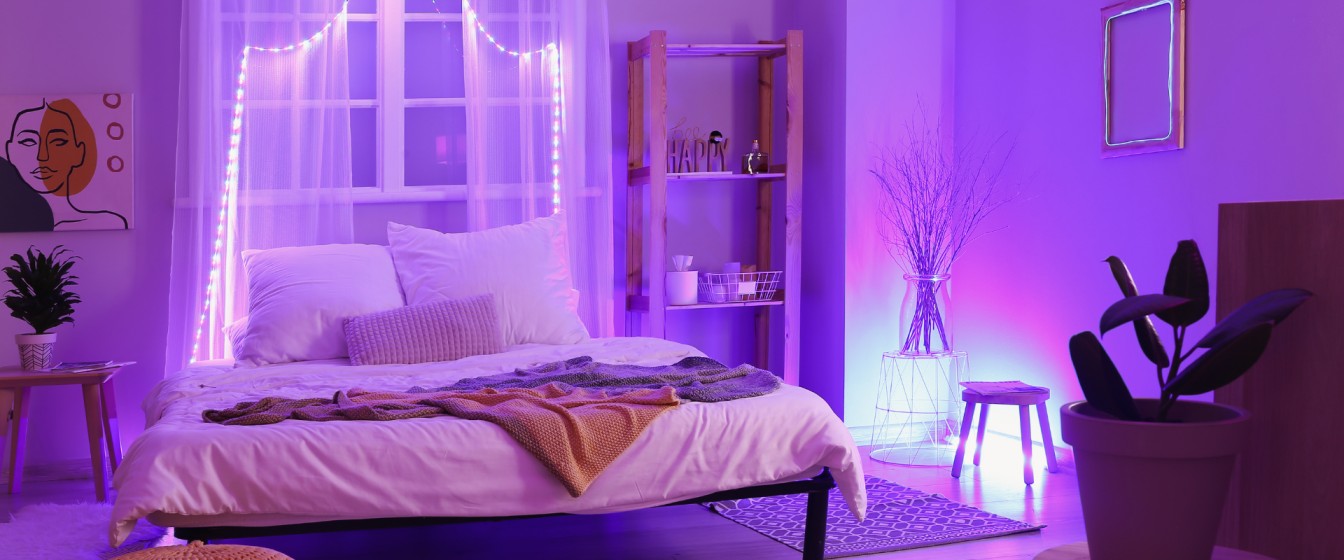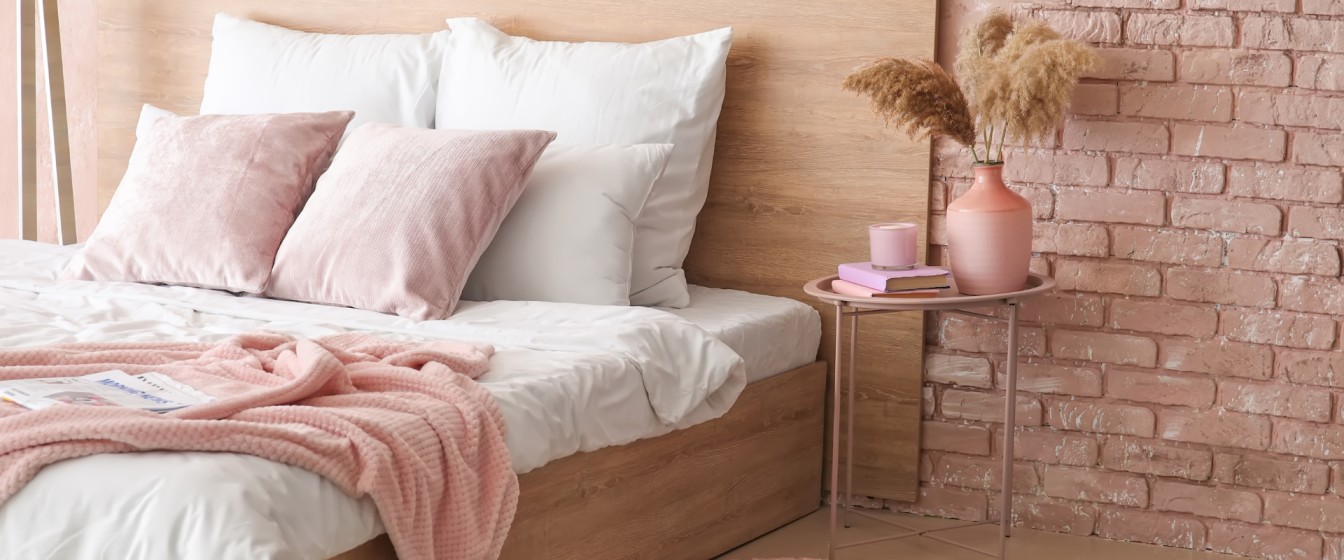What is Modern Design? Modern design is all about clean lines, simplicity, and functionality. It often features a neutral color palette and sleek materials, creating a sense of calm and order.
Neutral Color Palette: Shades of white, gray, and black dominate modern bedrooms, providing a clean and uncluttered look.
Sleek Furniture: Furniture pieces are often minimalist, with straight lines and a mix of metal and glass accents.
Minimalist Decor: Less is more in modern design. Choose a few statement pieces like abstract artwork or a designer lamp to add personality without clutter.
Examples:
A modern bedroom might feature a low-profile platform bed with a headboard, white walls, a sleek metal bedside table, and a simple pendant light.
Understanding Minimalism: Minimalism emphasizes simplicity and the idea of “less is more.” It’s about creating a serene space free of distractions.
Key Features of Minimalist Bedrooms:
Neutral Colors: White, beige, and gray are commonly used to keep the space light and airy.
Functional Furniture: Choose pieces that serve multiple purposes, like beds with built-in storage.
Limited Decor: Use a few carefully chosen items to decorate, such as a single piece of artwork or a vase.
Design Tips: To achieve a minimalist look, start by de cluttering. Keep surfaces clear and choose furniture with hidden storage options to maintain a clean aesthetic.
Challenges of Small Spaces Small bedrooms can feel cramped and challenging to design. The key is to maximize the space without sacrificing style.
Solutions for Small Bedrooms:
Multi-Functional Furniture: Opt for beds with storage drawers or a loft bed that frees up space underneath for a desk or seating.
Vertical Storage: Use shelves and tall wardrobes to take advantage of vertical space.
Use of Mirrors: Mirrors can create the illusion of a larger space by reflecting light.
Layout Tips: Position the bed against the wall to free up floor space, and use wall-mounted lamps instead of bedside tables to save room.
Defining Luxury: Luxury in bedroom design is about high-quality materials, spacious layouts, and attention to detail. It’s about creating an experience of comfort and elegance.
Key Elements of Luxury Bedrooms:
High-Quality Fabrics: Use plush materials like silk, velvet, and high-thread-count cotton for bedding and drapes.
Statement Furniture: Invest in a standout piece like a four-poster bed or an ornate dresser.
Elegant Lighting: Chandeliers, bedside lamps with gold accents, and recessed lighting can add a touch of glamour.
Rich Color Schemes: Deep blues, purples, and golds create a sense of opulence.
Incorporating Luxury on a Budget: You don’t have to spend a fortune to achieve a luxurious look. Focus on small details like luxurious bedding, a beautiful throw, or a statement light fixture.
Creating a Cozy Atmosphere A cozy bedroom is all about comfort. It’s a space where you feel warm and relaxed.
Cozy Elements to Consider:
Soft, Warm Lighting: Use lamps with soft bulbs to create a warm glow.
Plush Bedding: Layer your bed with soft blankets, throws, and plenty of pillows.
Warm Color Schemes: Earth tones like browns, oranges, and deep greens make a space feel inviting.
Natural Materials: Incorporate wood, wool, and other natural textures to add warmth.
Personal Touches: Add personal items like family photos, a favorite book, or a cherished blanket to make the space uniquely yours.
The Impact of Color: Color plays a crucial role in setting the mood of a bedroom. Different colors can evoke different emotions and feelings.
Neutral Tones: Colors like beige, gray, and white are versatile and create a calm, clean space.
Bold Colors: Deep shades like navy, emerald green, and burgundy can add drama and sophistication.
Pastels: Soft colors like light pink, mint green, and lavender create a soothing and gentle environment.
Monochromatic Schemes: Using different shades of the same color can create a cohesive and harmonious look.
Tips for Choosing Colors: Consider the size of the room, the amount of natural light it receives, and your personal preferences when choosing a color scheme. Light colors can make a small room feel bigger, while dark colors can add warmth to a large space.
Tips for Choosing Colors: Consider the size of the room, the amount of natural light it receives, and your personal preferences when choosing a color scheme. Light colors can make a small room feel bigger, while dark colors can add warmth to a large space.
Tips for Arranging Furniture:
The Focal Point: The bed is usually the focal point of the bedroom. Position it in a way that allows easy access and doesn’t block natural light.
Clear Pathways: Make sure there is enough space to move around comfortably. Avoid overcrowding the room with furniture.
Balance: Distribute furniture evenly to create balance. Pair large furniture pieces with smaller items to avoid a lopsided look.
Examples: In a small bedroom, placing the bed against a wall and using wall-mounted shelves instead of bulky nightstands can save space.
Why DIY? DIY projects allow you to personalize your space and can be a fun, creative way to enhance your bedroom without breaking the bank.
Custom Headboards: Create a unique headboard using fabric, wood, or even recycled materials.
Handmade Wall Art: Use paint, fabric, or found objects to create one-of-a-kind artwork for your walls.
DIY Shelving Units: Build your own shelves to fit your space perfectly and display your favorite items.
Step-by-Step Guides: Provide clear, simple instructions for each project. For example, to make a custom headboard, you might need fabric, batting, a staple gun, and a wooden frame.
Role of Lighting in Design Lighting is essential in setting the mood and functionality of a bedroom. It can make the difference between a room that feels cold and one that feels warm and inviting.
Types of Lighting to Consider:
Ambient Lighting: General lighting that illuminates the whole room, such as ceiling lights.
Task Lighting: Focused lighting for specific tasks like reading or working, e.g., bedside lamps.
Accent Lighting: Highlights specific areas or features, such as artwork or architectural details. Wall sconces or strip lights can be used for this purpose.
Tips for Effective Lighting: Layer different types of lighting to create a balanced and functional space. Use dimmers to adjust the light intensity according to the mood or time of day.
Sustainable Design: Using eco-friendly materials and sustainable practices is becoming increasingly popular.
Smart Technology: Incorporating smart lighting, temperature control, and other smart home features for convenience and efficiency.
Biophilic Design: Bringing nature indoors with plants, natural materials, and nature-inspired decor to create a calming environment.
Future Predictions:
Tech-Integrated Furniture: Expect more furniture pieces with built-in tech features like wireless charging and smart lighting.
Personalization: The trend towards more personalized spaces will continue, with customizable furniture and decor options.
